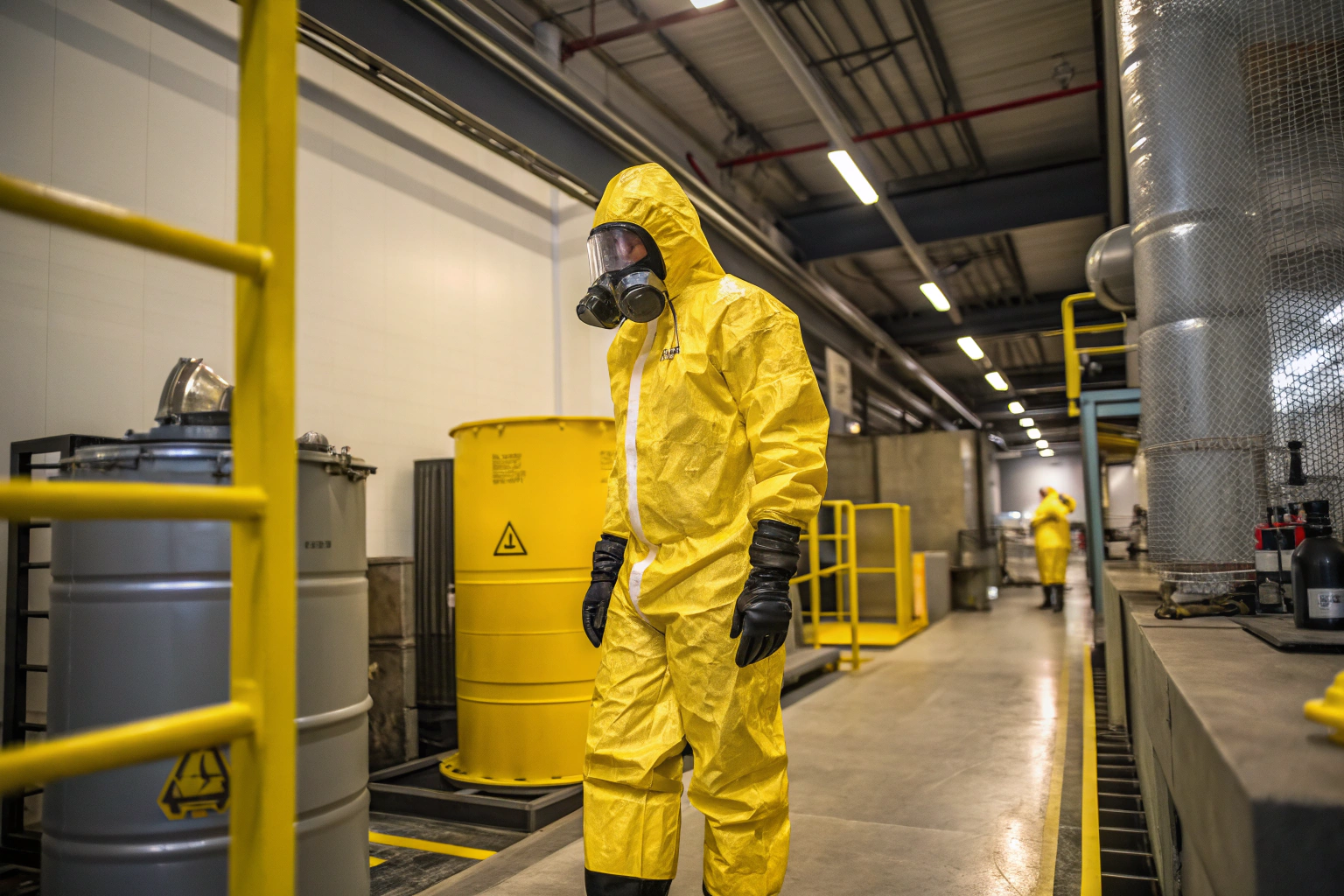When people work in dangerous places, protective clothing is the last line of defense. If the suit fails, lives are at risk. Workers who deal with chemical, biological, or gas hazards need complete trust in what they wear. A suit that looks safe but is not tested under the right standard can break down at the worst time. That risk is too high for any company to take.
ISO 17491 is the global standard that checks if gas-tight suits can stop gases from leaking through. It tests the suit fabric and the way the suit is built. This makes it important for both manufacturers and buyers. It gives proof that the clothing is safe, reliable, and ready for use in real-world danger.
I have spent many years in the textile industry. I know that a certificate is not just a paper. It is a promise of trust. In this article, I will show why ISO 17491 matters and how it sets the safety rules for protective clothing.
What Does ISO 17491 Testing Include?
ISO 17491 is not only one test. It is a set of tests that copy real risks workers face. These tests check if the suit can hold pressure, stop leaks, and keep out harmful gases.
The standard proves if gas-tight suits can perform under stress. Testing takes place in sealed rooms. Suits are inflated, and test gases are released. Sensors then look for leaks in every part of the suit.
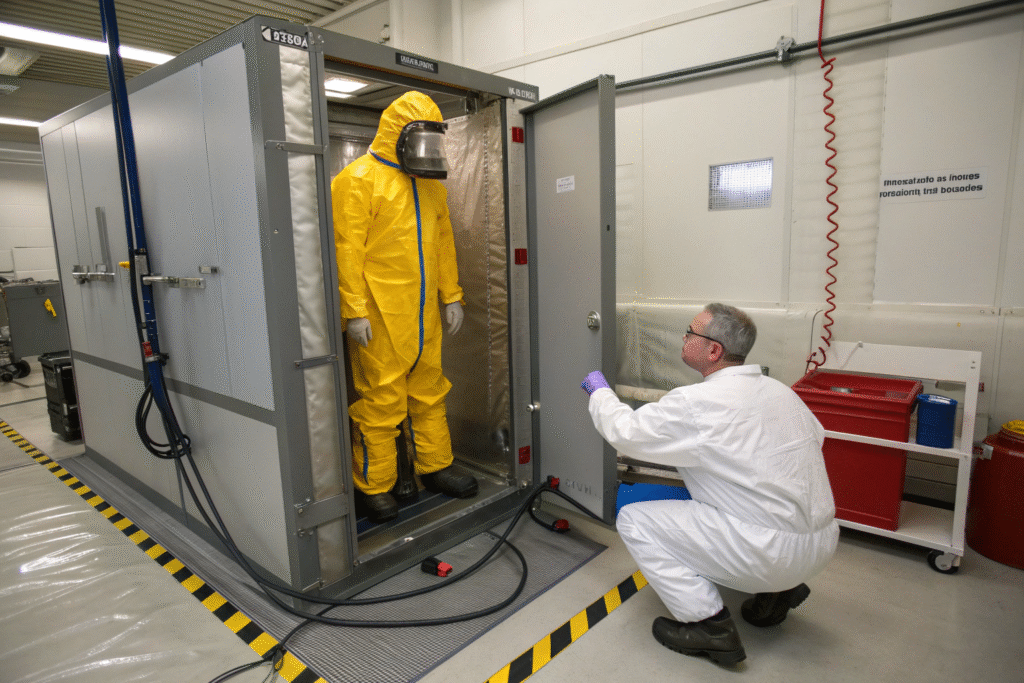
How Are Pressure and Leakage Tests Conducted?
The leak test is the most important one. A suit is blown up with air and placed in a chamber. A harmless gas is pumped in. Sensors track if any gas escapes through zippers, seams, or coatings. As SGS explains, this method finds small flaws that the human eye cannot see. Another test checks if the suit keeps steady pressure inside. Without this, a gas-tight suit cannot work.
What Chemicals Are Typically Used for Testing?
The most common gas for testing is sulfur hexafluoride (SF₆). It is safe for humans but acts like toxic gas when it comes to how it moves through fabric. That makes it perfect for testing. According to Intertek, this approach gives real results without putting testers at risk. Other safe gases may also be used depending on the buyer’s needs.
Why Do Manufacturers and Buyers Rely on ISO 17491?
For buyers in industries where safety is key, trust is everything. Choosing the wrong supplier can mean failed safety checks, shipment delays, or even lawsuits.
ISO 17491 certification gives confidence. It shows that a gas-tight suit can meet global safety rules. This makes buying easier for companies that work across borders because the same test is accepted in Europe, America, and Asia.
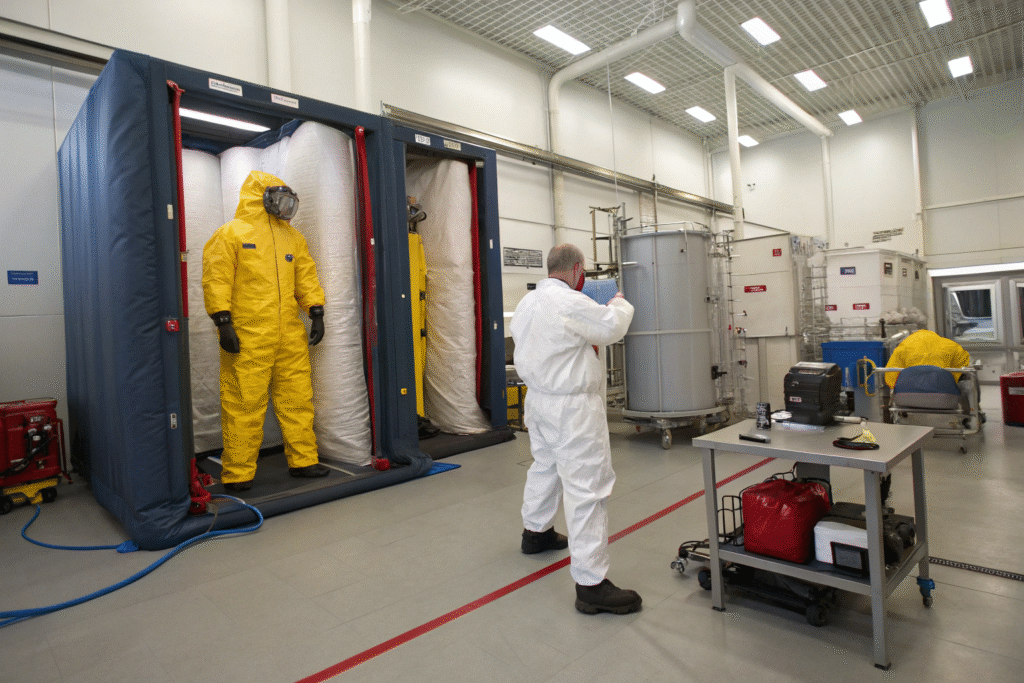
Does ISO 17491 Guarantee Compliance with Local Laws?
In most cases, yes. The European Union PPE law and U.S. OSHA both accept ISO 17491 as proof of compliance. This means buyers can skip repeat tests in different countries. It saves both time and money. More can be found on the European Commission PPE regulations.
How Does It Impact Supplier Selection?
Suppliers with ISO 17491 suits stand out. Buyers prefer them because they lower risks and make customs clearance smoother. According to Bureau Veritas, this level of quality helps long-term partnerships.
What Are the Risks of Ignoring ISO 17491?
Not following ISO 17491 is risky. A suit may look strong but still have weak points. Coatings may peel, seams may open, and zippers may fail.
When this happens, workers get hurt, companies face lawsuits, and trust is lost. One failure can destroy a brand’s reputation.
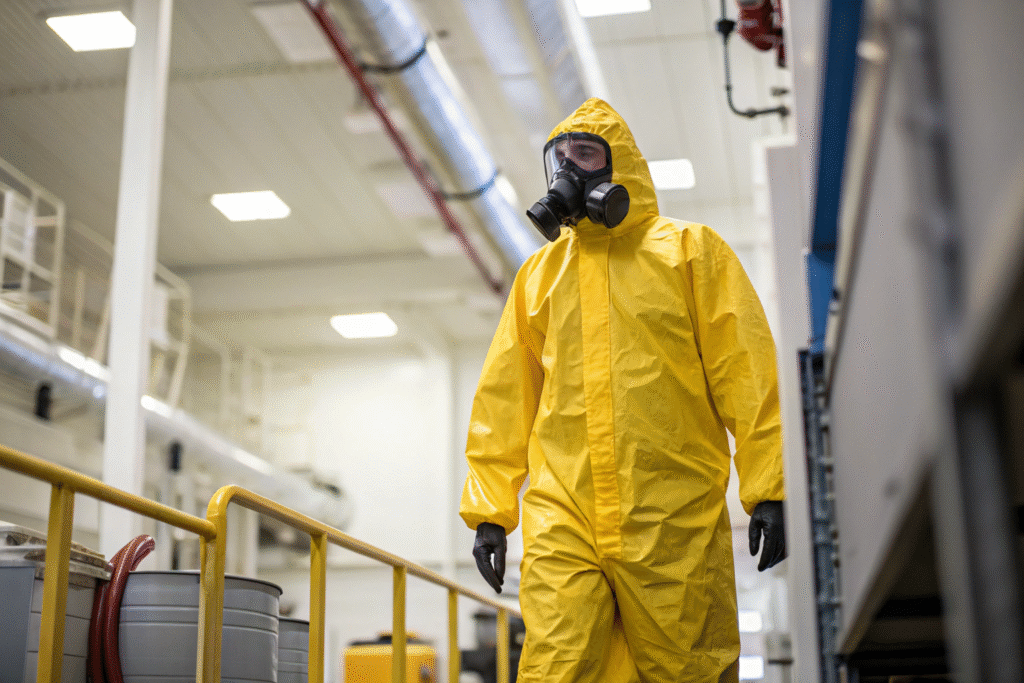
Could a Non-Certified Suit Still Work?
It might work, but there is no proof. Some suppliers run their own tests, but without ISO 17491, no one knows if results meet world standards. The National Institute for Occupational Safety and Health (NIOSH) warns that only set rules can stop mistakes in testing.
What Are the Financial Risks?
The biggest financial risk is rejected shipments or damage claims after an accident. According to TÜV SÜD, skipping ISO tests can also raise insurance costs and delay supply chains.
How Does ISO 17491 Drive Innovation in Protective Fabrics?
Standards do more than protect workers. They also push fabric makers to go further. When ISO 17491 sets high targets, suppliers must create smarter, lighter, and safer materials.
Our own research team has developed eco-friendly coatings and nanofiber fabrics that pass ISO 17491 while cutting suit weight by 20%. This shows that safety and innovation can grow together.
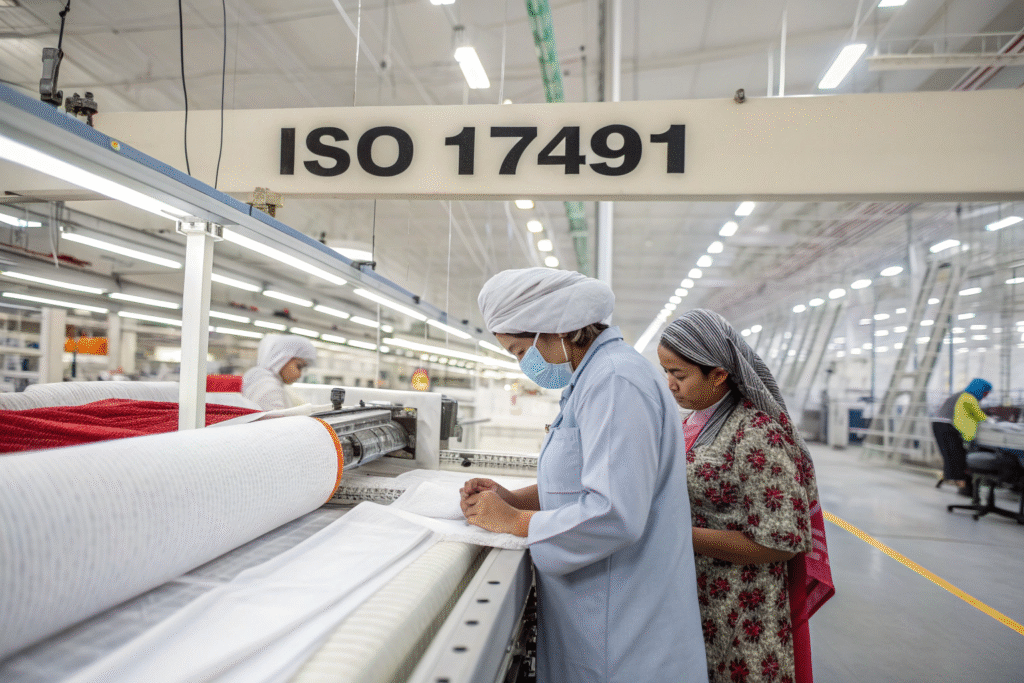
Are Sustainable Fabrics Part of Gas-Tight Protection?
Yes. Today, many producers mix recycled polyester and bio-based coatings into suits. Textile Exchange notes that even technical fabrics now must include green solutions. This gives buyers both safety and eco value.
How Fast Is Innovation Moving?
Innovation is moving fast. AI now helps design and test fabrics. 3D printing supports quicker suit parts. As ResearchGate studies on protective textiles explain, this allows new products to reach the market faster while still meeting ISO rules.
Conclusion
ISO 17491 is not just a test. It is the rule that keeps workers safe and companies secure. It reduces risks, saves money, and drives new fabric ideas. For buyers, it means peace of mind and trust in every shipment.
If you are looking for a reliable partner to produce ISO 17491-compliant protective fabrics or garments, we at Shanghai Fumao are ready to help. With decades of expertise and a fully integrated supply chain, we deliver safe, sustainable, and innovative fabrics for global buyers. You can contact our Business Director, Elaine, at elaine@fumaoclothing.com to discuss your protective fabric needs.

